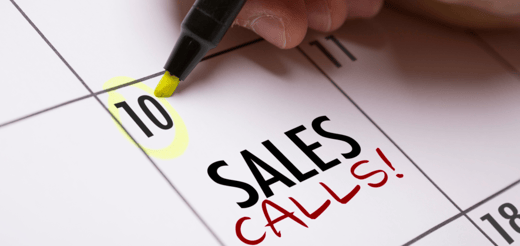As we cross another year of living in times of COVID, it is clear that the crisis is far more than just a health crisis – we are seeing societies and economies be affected at their core. However, it is estimated that the novel vaccine for COVID will be ready in less than 2 years and progress is being made to bring the crisis to its end which may be in sight by early to mid 2021.
Initiatives made by B2B companies
We’ve seen governments around the world initiating full or partial lockdowns, enforcement of social distancing and universal masking. With non-essential businesses closing, we also saw provision of economic relief and liquidity in the form of grants, loans and subsidies.
Companies have mostly responded to these impacts in 3 major ways:
- making budgetary adjustments
- providing freedom to or simply mandating working from home
- temporarily or permanently decreasing workforce
3 ways companies responded to COVID
Firstly and expectedly, most companies froze spending and prioritised survival rather than growth. On April 8th, McKinsey released a survey illustrating that about 55% of the companies reported lowering their budgets whereas 26% reported increasing their budgets and 19% reported keeping them at the same level.
Secondly, in efforts to safeguard employees from the spread of the virus, a global shift towards working from home where, again in April, it was estimated by Gallup that 62% of employed Americans have worked from home and, according to the ONS, 46.6% of people in employment in the UK did some work at home where most say was caused by COVID.
And thirdly, the economic impacts forced many companies to downsize leaving many with reduced working hours or unemployed as seen in the US where unemployment rates during the months from April to July sat in double digit percentages.
How B2B lead generation was impacted?
From seeing how companies responded, these impacts left sales teams to deal with two key changes that affected their performance:
- a diminished pipeline
- a lower win rate
According to Kristina Shen, a partner at Andreessen Horowitz, a company’s sales pipeline is the leading indicator for what the rest of the year is going to look like.
After COVID’s counter measures were announced, existing sales pipelines had diminished and the opportunity to commit ratio plummeted. Many businesses saw that generating leads became increasingly difficult as sales channels became less efficient and B2B buyers delayed purchases.
Impacts on B2B sales caused by budgetary changes
Since the pandemic has put many countries into a recession, many companies would look to focus on areas like client retention, capital preservation and business continuity solutions.
With companies either waiting for things to normalise or having to spend on technologies that enable remote working, this led to existing sales pipelines needing to be re-evaluated and deals to be re-qualified. As companies froze or even cut their budgets, the figures by McKinsey suggest an estimate of nearly half of those deals could be affected resulting in either sales cycles prolonged or deals lost. Furthermore, Martin Casado, a general partner at Andreessen Horowitz, states “deals are becoming more complicated, as CFOs and other executives become more involved in procurement, even for smaller deals”.
Overall, with potentially fewer deals to work with and increased complexity, sales people are likely to experience difficulty in generating leads, closing deals and uncertainty in attaining quota where they potentially face increased rejection as the B2B market tightens.
B2B lead generation challenges from working remotely
With offices closing and employees forced to work from home, a survey by McKinsey shows 96% of B2B sales teams have fully or partially shifted to remote selling. One way this impacted sales teams’ lead generation efforts was that many sales managers were forced to quickly make the transition from face-to-face to remote management resulting in about 40% expressing low self-confidence in their ability to manage workers remotely. Furthermore, a lack of transparency caused sales managers to develop a distrust of their team leading them to micromanage and add further pressure onto sales people.
Since B2B sellers and buyers are at home, the hurdle of learning how to generate leads, deliver demos, and close deals while at home needed to be overcome, especially as key channels that were previously relied upon to build pipeline were affected in a variety of ways:
In-person events, conferences, trade shows, and summits – since many (if not all) types of large gatherings are cancelled for the foreseeable future, this has impacted both B2B buyers and sellers who rely on exploring business solutions and connecting with relevant people.
Cold calls – with so many working from home, it could be a challenge to connect with decision makers as not all companies may have the infrastructure set up to transfer calls to mobile phones or are unable to provide a direct number as per their data protection guidelines.
Cold email/Social selling – as one of the few reliable outreach channels, an increase in competition could be expected and prospects are likely to receive more sales messages than usual.
The move away from the office broke up sales teams and meant they had to solitary face a tightening market whilst being isolated from their colleagues. Unfortunately, being at home can reduce morale as support and interaction with fellow colleagues has substantially decreased leaving some to even be affected mentally.
Workforce changes affecting B2B sales and lead generation
The closure of non-essential businesses earlier this year led to a knock on effect across the B2B market. As many B2B and B2C companies shrink or close, unemployment sharply rose around the world causing many companies to operate with a reduced number of employees. Schemes around the world such as the UK’s Job Retention Scheme were implemented to support such people which has furloughed nearly 10 million jobs according to HMRC.
Impacts on sales teams’ performance could be caused by a drop in morale due to potentially seeing their own team downsize. Also, since some people may no longer be employed, prospective companies may be operating with smaller teams making them unable to take on new projects which adds difficulty on sales people to generate leads.
How to rebuild B2B sales pipeline
“Six months into the COVID-19 pandemic, it is time for companies to act, not react” according to McKinsey. Although more than half a year has passed, B2B organisations today are still very much impacted by the challenges brought about by COVID. As we draw closer to the end of the year, the pandemic is still at large and some places have even gone back into lockdown.
However, downturns like this can often create ways for companies and sales people to become more innovative and efficient as technologies continue to improve and the culture of working remotely becomes more normalised. B2B companies must start to rebuild for the longer term in order to come out ahead.
Reprioritising B2B lead generation
Studying the last major recession in 2007-2008, there are many ways to learn from how companies successfully managed during this time. A BCG study reported regarding cost-reduction initiatives that “cutting marketing expenditures is a very common response, but it is one that can backfire. The evidence from previous recessions is that – after a recession was over – those companies that had continued to support their products and services typically outperformed companies that had, less thoughtfully, slashed marketing expenditures when the downturn hit”. Although the cause was different, you can still see the importance of investing in areas such as paid advertising, content creation and cold outreach.
A priority for B2B sellers now is to focus on lead generation and rebuilding their sales pipeline. Although companies may have reduced their budgets, a second survey by McKinsey taken on April 28th revealed a small change in sentiment where 45% of companies have kept budgets unchanged or even increased it. Sales people should be mindful of how impactful the last several months have been and consider taking a more consultative approach, even to possibly be more flexible in offering a smaller deal size or easier payment terms.
Turning work from home into an advantage
A move to working from home can offer B2B companies more flexibility as well as opportunities that can only be attained by working remotely. Opportunities such as removing office rent as an expense, hiring talent from around the world, and eliminating time spent commuting are just a few ways that companies can benefit from remote working.
After many months of operating from the comfort of one’s home, a question to consider is if a return back to the office is necessary. Below are a few findings how this new way of working can benefit you:
- The HBR referenced a study when employees worked from home “their productivity increased by an average of 13%, apparently due to a reduction in break time and sick days combined with a more comfortable work environment”.
- BCG reports a 15-40% increase in productivity for employees with remote models, 40% reduction in absenteeism, 10-15% reduction in turnover, and over 20% in potential cost reduction. It goes on stating their survey revealed “companies expect approximately 40% of employees to utilize a remote working model in the future”.
- The change to remote is not just benefiting companies but also customers where a key finding from a survey by McKinsey states “B2B companies see digital interactions as two to three times more important to their customers than traditional sales interactions”.
Establishing that remote working is likely here to stay, flexible or permanent remote workforce arrangements would require the correct infrastructure by providing the requisite technologies and hardware for sales people. Investing in centralised platforms can enable automation and remote collaboration amongst colleagues and also provide full transparency for management. Also, ensuring sales people are equipped with items such as laptops and mobile devices can make work at home a success for your company.
A couple of case studies that bring to light how remote working may be here to stay:
In late August, Pinterest announced that it has paid $89.5 million to terminate its lease to save future minimum lease payments of approximately $440 million. The CFO also stated “as we analyse how our workplace will change in a post-COVID world, we are specifically rethinking where future employees could be based”.
A post from Andreessen Horowitz wrote about an event that typically draws 4000-5000 attendees to San Francisco. But, with the limitations posed by COVID, the event changed to a virtual setting and saw over 20000 people attend. Since costs on travel and accommodation are removed and without being geographically restricted, this opens the invitation for speakers and attendees from all around the world to attend. Also, moving to an online platform potentially enables limitless people to attend which opens the opportunity of more B2B buyers and sellers to connect with each other.
How to increase productivity with a reduced workforce
Rebuilding a sales pipeline with a reduced workforce and potentially fewer B2B buyers to reach out to can be a challenge. But, using a mix of technologies and outsourcing can help alleviate workload, streamline processes, and still maintain high levels of output.
In B2B sales, many tasks that used to be done manually can now be replaced by the use of digital tools (aka a sales stack) as seen in appointment scheduling, CRM, electronic signature, sales and outreach automation, and much more. As remote working becomes more normalised, future innovations can further aid in productivity and efficiency for companies.
Furthermore, B2B sellers can save time when prospecting from having to source and connect with contacts themselves. Instead, they can take advantage of database vendors or providers of on-demand generation of contacts to acquire the specific contacts to target and utilise automation to create and execute outreach campaigns. Scalable solutions like these can not only save time but can also lower customer acquisition costs.
By outsourcing and automating tasks without any loss of quality, B2B sellers can focus more of their time on improving the quality of their engagement with more prospects.
In summary
Earlier this year, the counter measures to COVID by governments around the world affected economies and made companies respond to these impacts in 3 major ways:
Making budgetary adjustments
- Providing freedom to or simply mandating working from home
- Temporarily or permanently decreasing workforce
These impacts left sales teams to deal with two key changes that affected their performance:
- Diminished pipeline
- Lower win rate
Salespeople must strive to proactively rebuild their sales pipeline despite the early reports of reduced budgets. An example would be to use data from an on-demand generator like hubsell where companies can decrease their customer acquisition costs and salespeople to remove manual tasks by taking advantage of specialist services to accurately source contacts.
Uses of automation can further help alleviate these pressures especially during outreach and other top of the funnel activities. Automation platforms and solutions can enable salespeople to create and execute outreach campaigns exactly as if done manually. Insights and reporting can also be much more in-depth since these kinds of technologies can track and measure activities that would not be possible if completed manually.
If you are looking for a solution to scale your outreach activities, we invite you to request a discovery call to see if there is a potential fit.
Tags:
Insights![How to avoid an email domain blacklist and remove your IP from one [in 2024]](https://hubsell.com/hs-fs/hubfs/Imported_Blog_Media/how-to-avoid-email-domain-blacklist-and-remove-ip-featured.jpg?width=520&height=294&name=how-to-avoid-email-domain-blacklist-and-remove-ip-featured.jpg)





